Leo J. Cremer: the Rodeo King of Montana's Historic Cremer Ranch

Located in the shadow of the Crazy Mountains in the Cayuse Hills of Sweet Grass County lies a ranch that is significant to Montana's history. Not because it is one of the oldest ranches or because precious metals were once found there. No, the Cremer Ranch is important because the man who built a thriving business there from very humble beginnings changed the sport of rodeo forever.
Leo John Cremer was born to German and Irish parents John and Mary Cremer on October 30, 1891 in a small town called Cashton—little more than a railroad stop tucked in the hills of east central Wisconsin. After high school Cremer attended law school at the University of Notre Dame where it is said he warmed the bench with Knute Rockne, the same man who later became the legendary coach who took the Fighting Irish to the pinnacle of the college football world.
After leaving Notre Dame, Cremer chose not to spend the rest of his life back home in Cashton or confined to a law office in the city. Instead, after visiting his brother's home near Richey, Montana, Cremer decided to pick up and make his way west instead. In 1912, after meeting a young woman from Big Timber, Cremer settled in nearby Melville. That woman, Bertha Stokes, who also spent time in Wisconsin, later became his wife and worked by his side the rest of his life.
Bertha Cremer purchased the first tract of land that would become the much larger Cremer Ranch. Leo Cremer then purchased a homestead next to Bertha's. At first they raised dairy cows, chickens and pigs. Cremer also hunted coyotes for the bounty, raised a few cattle, and then many, many sheep.
Cremer also raised draft horses, most of which were wild and roaming free in the empty fields there in south central Montana, many of whom were left behind by those who homesteaded before them but failed. He would catch them, tame them, and teach them to pull a plow, all before trailing them back to Wisconsin to farmers who eagerly purchased them there.
Melville is a small place in the heart of Montana's ranching country in northern Sweet Grass County. Located 20 miles north of Big Timber along the Sweetgrass Creek, it is home to Montana's first Lutheran congregation. The beautiful Melville Lutheran Church was built near the Cremer Ranch about the same time the Cremers started homesteading nearby and it still stands there today.

Just east of the Crazy Mountains, the Cremer Ranch gradually grew with sound business practices, hard work, and shrewd land purchases. About that same time, legislation was introduced in the U.S. Congress proposing the Crazies become a national park. Congress failed to pass the legislation, however. When officials in the National Park Service considered the idea again in 1935, they determined a national park wouldn't be feasible because "half of the land is owned by the Northern Pacific Railroad or is in private hands."
But before all that, Leo J. Cremer, a strapping, square-jawed muscular chap, toiled trying to eke out a living for his new family. Then around 1919 Cremer saw his first rodeo. He then gave rodeo a try for himself. He won two titles in back-to-back years for "dogging" (a.k.a. steer wrestling) at the Livingston, Montana rodeo. Then in 1926, some friends in nearby Big Timber came calling with a sudden urge to create an impromptu rodeo just for themselves. Leo Cremer's steeds were, they thought, perfect for bucking. Without hesitation they "borrowed" some of Cremer's stock while he was away in the field haying. They held their very personal, makeshift rodeo right there in Cremer's barnyard. When Cremer returned from the fields and witnessed the hijinks for himself, the seeds for Cremer's rodeo company were planted. So bitten by the rodeo bug, his interest in the great Western sport grew and soon Cremer would begin producing rodeos for others to see. Mr. Rodeo was born.
The Cremer Ranch served as headquarters for his traveling rodeo, which he called "Leo J. Cremer's World Championship Rodeo Company." Though it was a working ranch that raised livestock, the Cremer Ranch also raised the best string of bucking horses in the entire state of Montana. Perhaps the world.
Cremer came to know a good rodeo performance must captivate the audience with thrilling moments. Good stock animals contributed to a rodeo by showcasing strength, agility, and a wild spirit. The explosive energy of a bucking bronc, the ferocity of a charging bull, and an animal's performance are every bit as important to the show as that of the cowboys who ride them. Someone once said, "For any rodeo to make a big hit, there has to be men who keep the stock fit." Cremer knew this. Then perfected it. And in doing so, he revolutionized the sport of rodeo forever.
In those early years, Cremer trailed his horses to nearby rodeos in Big Timber, Butte, Livingston, and Billings. Then in 1934 he bought his first semi truck and began hauling stock farther away to places like Lewistown, Great Falls, and Miles City. Around 1936 he began using buffalo in his rodeo shows for the first time…until one of them killed his favorite horse. That's when Cremer retired his small herd of buffalo and began using bucking steers instead. Always innovating, Cremer then switched to bigger, stronger Brahma bulls. More and more semi trucks later, Cremer was hauling his stock to bigger and better events in Colorado, Louisiana, Idaho, Texas, Oregon, Utah, and Wyoming.

Eventually, Cremer began using the locomotive to move his stock to shows in other parts of the country. He wined and dined the railroad people so he could talk them into accommodating his needs. Or more aptly, the needs of his animals. Like convincing them to put sand down in baggage cars so his stock was comfortable and could get to destinations faster. Doing so was easier on his animals than loading them into cattle cars.
Between events, Cremer still tended to his herd at home and also spent time at smaller rodeos in the state looking for the very best bucking horses money could buy. "Any bronc that can be ridden by a range hand will be immediately cut from my herd," he said, as Cremer believed "good horses are not made, they are born."
Before Cremer arrived on the scene, many in the rodeo world believed small, lightweight horses were the best buckers. Cremer, always the fiddler and tinkerer, experimented with the horses on the Cremer Ranch. One day he loaded one of his big, strong draft horses into the chute. His ranch hands, who also were rodeo riders, all laughed. But soon they learned the joke was on them as none of them could stay on top of the horse. Cremer would later experiment with different breeds and tinkered some more before introducing strong, husky broncos, previously considered better suited for working in the fields than in a rodeo arena.
Bucking horses with names like Hoochie Coochie, Hell to Set, Widow Maker, Sad Face, Tim Buck Two, and Bald Hornet were among Cremer's best animals. One of his favorite bucking horses was a mare named Prison Bar, which Cremer so named because she was born outside of the Montana state penitentiary near Deer Lodge. Prison Bar was such a good bucker she performed in Cremer's rodeos well past her 25th birthday. Another horse named Come Apart was even better. So good, in 1979 she too was inducted into the Pro Rodeo Hall of Fame.
Cremer once said, "A good bucking horse should have the speed of a thoroughbred and the strength of a workhorse." Because of that notion, rodeo riding became one of the toughest sports in the world and has never been the same since.
Though Cremer loved his bucking broncs, he was also famous for his bulls, many of whom were purchased in Mexico where the rodeo bulls were much larger than those traditionally seen in American rodeos. Sturdy and strong and often without much experience around cowboys or wranglers, the average weight of Cremer's bulls tipped the scales at over three-quarters of a ton. They had names like Black Devil, Yellow Jacket, Tornado, Joe Louis, and Dynamite; all of which would strike fear into any rider who dared ride them. Newspapers called Cremer's bulls the "fightingnest" bulls in all of rodeo.
One of Cremer's most famous bulls was one called Black Devil, who was so ornery the rodeo cowboys petitioned to have him removed from regular competition. Cremer still found a way to keep Black Devil in the show, though. Cremer dared the cowboys to take a big chance on Black Devil in exchange for big money, but only if they signed a contract to do so.

According to more than one account, Cremer cared for his stock with the same manner typically afforded thoroughbred race horses. He treated his animals well and fed them even better. In fact, he fed them so well his "dogger" steers became so large men had trouble wrestling them to the ground. And for the first time spectators watched as wrestlers slid halfway across the arena with their steer in hand before they stopped. If at all. Cremer's steers grew so big, the Professional Rodeo Cowboys Association (PRCA) stepped in and had to change the rules. Cremer knew the most important ingredients at a rodeo included having the best possible stock, providing classy and colorful acts, conducting a well-organized event, and making sure every attempt was made to woo the crowd. And because of this, his rodeos were often regarded as the very best productions in every regard.
Cremer, who dressed like a cowboy as often as his riders did, was considered the first rodeo producer to regularly include special acts at rodeos. Clowns, trick riders, and jumpers all first appeared in Cremer's rodeos. Nancy Sheppard was one of the performers who traveled with Cremer's team. She was billed as the only woman who could stand on a running horse while twirling two ropes at the same time. Cremer also tapped the radio announcer Cy Taillon for the crow's nest. Cremer recognized Taillon's unique abilities and felt he was perfect for announcing rodeos. Someone once said Taillon could play a rodeo crowd the way a musician played an instrument, "by instinct and with perfect pitch."
Outside of the rodeo arena, Cremer was just as colorful as he was inside it. Though he was mostly busy raising cattle and managing his rodeo company, Cremer somehow found time to serve two terms in the Montana State Senate. He was first elected to the legislature as an independent in 1949, winning by just one vote. He then again served in 1951. While serving, he playfully introduced a bill proposing Montana move its state capital from Helena to Big Timber, which caused quite a ruckus in the halls of the capitol as well as the newspapers. Eventually the bill was tabled indefinitely, but not before Cremer had his fun debating it with his colleagues in senate chambers.
Over time, the Cremer Ranch grew to over 80,000 acres, including land in three counties and more than 4,800 head of livestock. By age 60, Cremer's rodeos were among the most watched and most popular in the country. His rodeo was seen in such magnificent places as Hollywood, Madison Square Garden in New York and at the Calgary Stampede in Canada, which was considered the greatest show of its kind in the world. The rodeos were some of the finest in the nation and were often the first time many people outside of the West were introduced to the sport. But it all came to a tragic end on Saturday, November 29, 1953.
On that day, the Cremers' truck slid off the road and rolled down a hill. Cremer leaped from the truck, probably the same way he would have if thrown from one of his bucking horses back in the day. But this time he did not escape. Cremer broke his back and later died. He was a legend, the likes of which Montana will never see again. And he was gone far too young. As the rodeo world and the state of Montana mourned his death, his death also became national news, as his life touched so many.
On his passing, a newspaper in Spencer, Iowa wrote: "Not everyone knew the man behind the show. Leo J. did not come to Spencer to make millions. Mr. Cremer already had his millions. He was a man of honesty and integrity here."

As the story goes, the sponsor of the rodeo, Spencer's Jaycees, lost dearly when Cremer's rodeo came to town. Though his rodeo would fill venues in some of the largest cities in America, it was somehow a financial flop in Spencer. But, as the newspaper recounted, Cremer settled up and made the Jaycees whole. And after doing so he said, "Boys, we lost our shirt, but shall we try it again next year?" The editor wrote, "One thing (is) certain, Spencer will not see a finer rodeo produced here ever again and it will be some time before another stranger comes into Spencer and northwest Iowa and has greater faith in our community. He gave as if (we) were his very own." This was clearly Spencer, Iowa's first real-world introduction to Montana's "Cowboy Code" and Cremer's very special version of it.
Cremer was considered one of the most honest men in rodeo. So honest, in fact, he often negotiated "contracts" for rodeos whose terms were never spelled out in writing. Agreements were not executed with a signature but with "a handshake between two Western gentlemen," which is even more remarkable considering Cremer studied law.
After his death, many venues around the country were left in a quandary, not knowing whether or not Cremer's rodeo would show up at their scheduled event to entertain spectators. How could they without the late great Leo J. Cremer? The Iowa State Fair, Colorado State Fair, Montana State Fair and others didn't know what to do. Bertha and Leo Jr. stepped forward, rolled up their sleeves, and made sure Leo J. Cremer's World Championship Rodeo Company fulfilled every single contract.
Later, Gene Autry, the "Singing Cowboy," purchased a half interest in Cremer's rodeo. Autry, a world-famous actor, musician, singer, composer, rodeo performer, and owner of the California Angels baseball team, became friends with Cremer over the years. He even stayed at the ranch and wintered his horse Champ there on occasion. Autry eventually bought all of Cremer's rodeo stock, which included "207 bucking horses, 52 Brahma bulls, 145 Mexican steers, and 40 parade horses" according to the music and entertainment magazine Billboard.
Nowadays Cremer's great-granddaughter Ronda Johnston owns and operates the original homestead, which is known locally as the "home ranch." She operates the ranch with her husband Rod, son Jake, and his wife Chelsie and their two little girls. The Big Timber Pro Rodeo, an event her great-grandfather Leo first contributed stock to, is also one of her responsibilities. It celebrated its 100-year anniversary in June. Ronda's brothers, Leo and Matt Cremer, also own other portions of the historic Cremer Ranch nearby.
"I wish I had the opportunity to ask my great-grandmother and grandparents all of the questions I now have as an adult," Johnston said. She said she never knew her great-grandfather but did know her great-grandmother Bertha. "I am proud they both were my great-grandparents."
People can learn more about the rich history of Leo Cremer and the Cremer Ranch at the Crazy Mountain Museum in Big Timber. The museum tells much of the Cremer Ranch's history, including a collection of chaps and brands that pay tribute to its continued progress.
Affectionately known as Mr. Rodeo by many, and "Leo the Lion" by his cowboys, Leo Cremer cherished his family and prized bucking horses. In recognition of his profound contributions to rodeo, Cremer was inducted into the Pro Rodeo Hall of Fame in Colorado Springs, Colorado in 1979, and the Montana Cowboy Hall of Fame in 2010.
Leo Cremer's contribution to Montana's story and the history of rodeo is unmistakable, and it should be widely recognized and indelible. His legacy is woven not only into the many rodeos that continue to march on all those years after his passing, but also into the very fabric of the land there in the shadow of the Crazy Mountains, where his ranch still sits, tended to by the family he cherished so much.
Cremer was a family man, a showman, a steward, a legislator, and a cowboy. He embodied the American Dream and the very essence of Montana. And as the years pass and the tales of Mr. Rodeo faded into the mythology of the West, one thing is certain: Leo Cremer's spirit will forever ride high near Melville with his beloved Crazies not far from view.




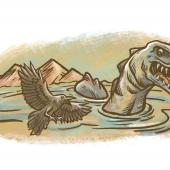

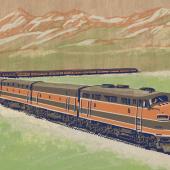
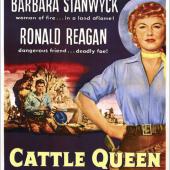
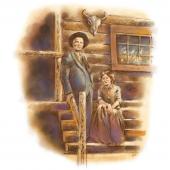
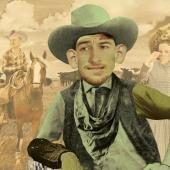
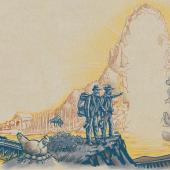
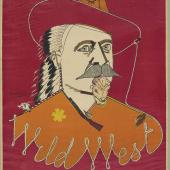
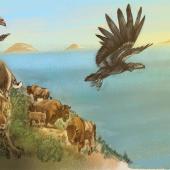
- Reply
Permalink